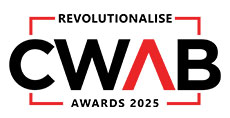SESSION I
SPACES: from traditional to modern to ‘glocal’
As technology advances and India progresses it gets more difficult to disagree with Amartya Sen when he says that globalization is inevitable. Today in virtually everything, be it in people, places or commodities, it is easy to see the crossing of national and international boundaries.
Likewise, architecture and interior design has become just another commodity in today’s world. People’s perceptions of style have changed and this has accelerated the changes in lifestyle—OUR SPACES ARE CHANGING…FROM TRADITIONAL TO MODERN TO ‘GLOCAL’.
Global influences are seen in almost every aspect of interior design. It is impossible today to look through a design magazine and not recognise the international influence throughout the photographed spaces. Globalization has an enormous effect on design. Not just product companies but even design firms are now international, having offices in multiple cities and countries.
Design is growing and communicating in every culture, over a range of languages. As people move around the globe, they take their style and history with them. The more design is globalized the more integrated styles will become.
The focus of this session is to question whether interior design is changing relative to local conditions, and the effect globalization has on the performance of regional —the intention being to understand how ideas shift from one place to another. The session will endeavour to bring forth the impact of global influence on interior design and why it is essential to recognise these influences and be prepared to interact as successful business people in a global society.
The session will bring together an ‘ICONIC’ interior designer face to face with our own MAVENS in the field. The session will endeavour to bring forth new ideas and inspirations in the field of ‘Interior architecture’.
SESSION II
SMART RENEWAL: digital technology and sustainability thinking
Without a doubt, green building is on the rise as global trends attest. According to the World Green Building Trends survey, 51 percent of respondent firms committed to incorporating sustainability into more than 60 percent of their work.
With green building becoming a critical part of today’s world, more and more new construction technologies are being developed to keep up with this escalating shift to sustainability. From maximizing the use of renewable resources to minimizing carbon footprint, whether in constructing a new sustainable building or greening existing infrastructure, the construction technologies aim to save the planet.
The trend of digital freeform and the awareness of environmental issues have propelled architecture to a higher level by comprehensively merging new technologies and green concepts. These observations suggest that we need a new structure for understanding the design process that integrates digital technology and the sustainable concept. Alternative technologies and paracentric ideas form an effective pool of resources that have the ideological potential to negate the effects of bizarre globalisation.
The session examines the relationships between diverse technical design strategies and competing conceptions of ecological place making. It will endeavour to highlight the conceptual challenges involved in defining what we mean by calling a building “green” and outlines a social constructivist perspective on the development of sustainable architecture.
The session will also focus on fusion of a new design processes and the overall interactions of digital technology and sustainability thinking. The attempt is to create a harbour for ideas on the issue of “Sustainability” & technology… to delineate the evolving minds and thoughts that make up the sphere of architecture and design. Collectively it will present people, practices and their support functions/tools that mark the subject under sustainable parameters.
SESSION III
MATERIAL MATTERS: path breakers who have explored and experimented
At first, it sounds crazy but these are only some of the research projects taking place around the world in order to take the construction industry to the next level. From scaling up graphene production to reinforcing concrete with nanocrystals, researchers today are shaping—or growing—the future of construction.
This development of innovative new building materials has allowed architects to better realise their visions, as they make more daring structures possible due to their improved strength, flexibility and durability. This is a field that is developing all the time. These materials create the ability to extend the user-experience, and offer a variety of opportunities that include customized printing and messaging, layering for dimensional effect, versatility in lighting, creating and dressing organic architecture, and manufacturing unique atmospheres through fabric solutions.
'MATERIAL MATTERS' session has been conceptualized to present innovators in the world of materials that literally comprises the building blocks of the entire AEC & Design Industry. It attempts to get together an iconic panel of architects who have dared to experiment and explore distinct properties of materials through architecture.
